The chief appeal of the New Irish Architecture 28: AAI Awards book, published by Gandon Editions, is the insight it gives into the conversations that fuelled the judges’ decisions on the 2013 awards in each category. The book is only publishing now, some years on from the awards, because of funding delays.
It’s striking how many of the category winners had concrete exteriors and wood-rich interiors: was this something the judges were collectively drawn to, or was it the general trend of buildings at the time?
That said, the main award – the Downes Bronze Medal – went to a timber-finned house that treads lightly on its Wicklow forest and quarry floor.
Global and local knowledge were provided by the judges, including architect Elizabeth Hatz, who works in Sweden and Limerick; a co-founder of DRDH Architects in London, Daniel Rosbottom; architect Donal Hickey; artist Maud Cotter; and architect Shane de Blacam, who brought years of experience and was able to point out where experiments by younger architects were likely to run into trouble.
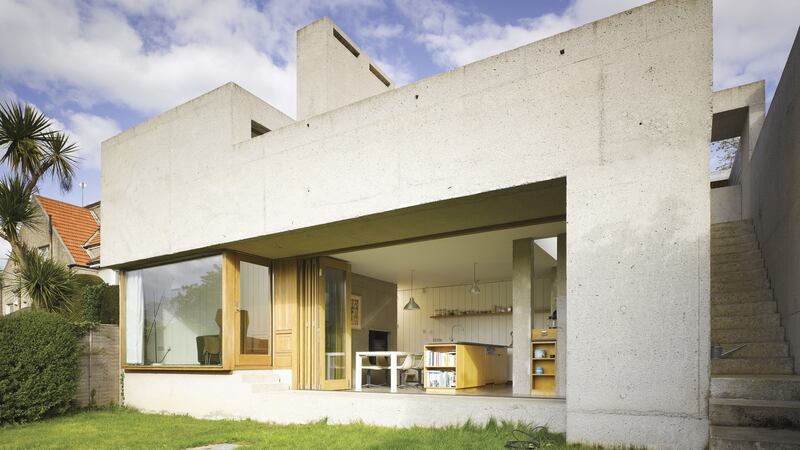
One of these insights concerned an extension, by Donaghy and Dimond Architects, to a 1920s bungalow in Dundrum, Dublin.
“This concrete has all been sandblasted, both internally and externally, and so they’ll have to go on washing it,” said de Blacam. “I think to put a sandblast machine on concrete is ultimately flawed . . . but we’ve all failed in that regard.”
The project’s bravery, discipline and articulation led the judges to give it an award, with Rosbottom saying: “This level of external articulation is quite good. It reminds me of [the architect Rudolph] Schindler. It makes the connection to the garden in an intriguing and spatially sophisticated way.”
“It’s not very beautifully proportioned,” said Hatz, “but in a funny way that’s okay, because it’s still disciplined.”
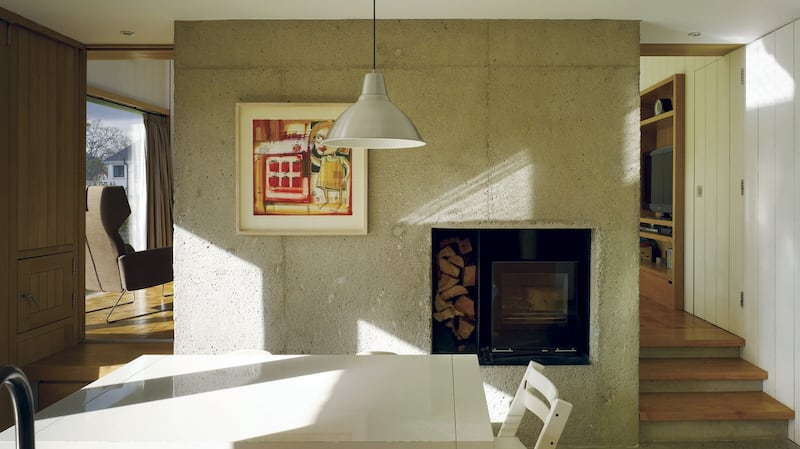
Rosbottom came back to the concrete in this and other projects: “All of these projects are quite nostalgic about concrete . . . where an architect’s heroic understanding of concrete meets a domestic client.”
‘Unique culture’
A house on a suburban housing estate in Dublin, by Taka Architects, which takes its cue in materials from the surrounding homes – with its concrete-tiled roof and pebbledash walls – was praised by Cotter for offering “a very unique culture within something that’s usually delivered in a very banal, generic way”.
“There’s something very provocative about placing something that could be understood as a villa . . . on a council estate,” said Rosbottom.
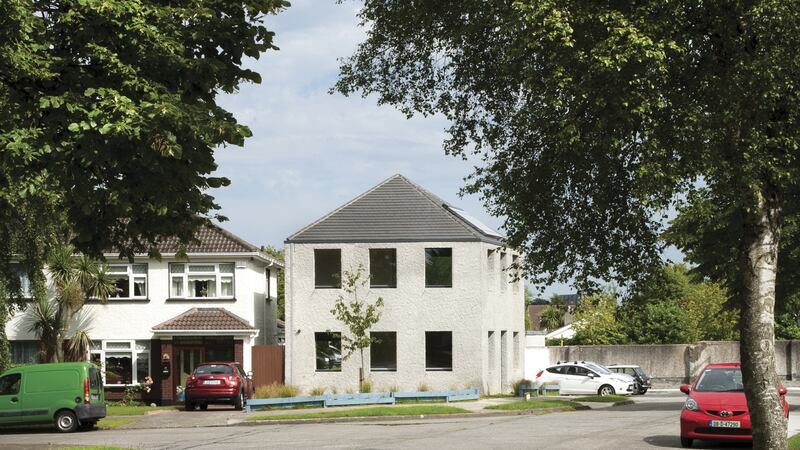
The judges compared it to work by Robert Venturi, Hermann Czech, Alison and Peter Smithson and Adolf Loos, and felt it was very knowing in its references, while "making something dignified, almost a little monument, out of something quite mundane".
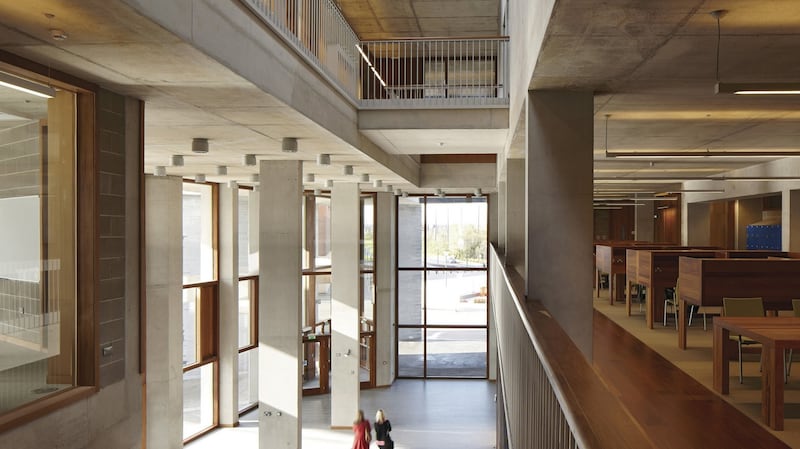
That human scale within disciplined structures also helped garner awards for the medical school, student housing and bus/bicycle shelter at the University of Limerick, by Grafton Architects, and for Scoil Mhuire Ógh in Crumlin, Dublin, by Mary Laheen Architects. The student housing at Limerick is in "quite big buildings", said Hatz, "and with their big openings they are acknowledging the scale of the campus, and also taking it down to a more human scale."
She referred also to its “warmth and community feeling”.
“In an institutionalised dwelling you can feel a kind of institutionalised coldness, but I don’t feel that here,” Cotter said in agreement.
Rosbottom added: “There are really eloquent moments in the plans, and a generosity in the planning.”
He also liked the plan of the Crumlin school, with its “idea of a school which has the character of a generous house”.
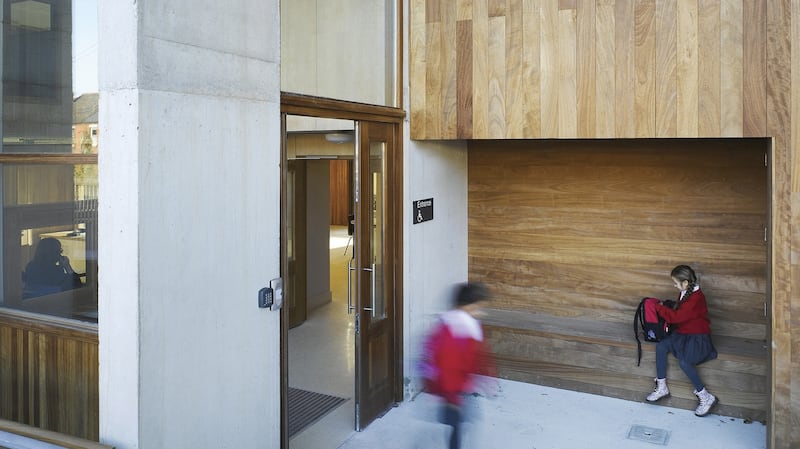
Hickey agreed. “This is for small children,” he said. “It is their first experience of being part of society, and I think it is a very nice introduction to society. Thanks be to God it doesn’t look like a conventional school, or like any of the other schools we’ve seen today.”
He liked spaces in the building, such as a courtyard “where I can imagine children being very protected. That’s a very generous thing to do.”
Intimacy
Moments of intimacy within austerity and sliding scales are what excited judges about the Teach Nua house in Co Carlow by Steve Larkin Architects.
“There’s a quietness and robustness that appeals,” said Hatz. “It’s well detailed without being precious.”
Rosbottom enjoyed the way “it stretches what feel like familiar things to make them strange: the chimney is taller than it needs to be, becoming kind of monumental, and it’s in a slightly strange place”.
"It's a very interesting and serious piece of work," said de Blacam, something he also felt about the Slievebawnogue house by Clancy Moore Architects, to which the jury awarded the Downes Bronze Medal.
The long timber house, in a Wicklow forest, “has so many layers – it works in section and plan”, said Hatz. “I find the plan so clever because it’s so consistent and strict in its geometry, but spatially it’s not strict. You know, we sometimes read plans as figures, which is so wrong. We should always translate them into space.”

“There’s something powerful about moving from the brooding forest to the lightness of the domestic interior in a way that somehow maintains the tectonic language,” said Rosbottom.
And that summed up the themes of the winners: sliding scales from large through playful to human; disciplined forms; materiality (often concrete exteriors with timber interiors); making knowing references; and challenging the norms while picking up on elements of them, among other things.
THE WINNERS
Downes Bronze Medal
Slievebawnogue house, by Clancy Moore Architects
Awards
Recasting extension, by Donaghy and Dimond Architects
Medical school, student residences and bus shelter, University of Limerick, by Grafton Architects
Architecture as new geography (Venice Biennale), by Grafton Architects
Scoil Mhuire Ógh, Crumlin, by Mary Laheen Architects
House in Co Carlow, by Steve Larkin Architects
House 4, Firhouse, by Taka Architects
Special Mentions
Carnivan House, Fethard-on-Sea, by Aughey O’Flaherty Architects
House on Chestnut Lane, by Boyd Cody Architects
Bord Gáis Networks Services Centre, by Denis Byrne Architects
The Garage, Co Fermanagh, by John Maguire Architects
Vessel: installation for Venice Biennale, by O’Donnell and Tuomey Architects












